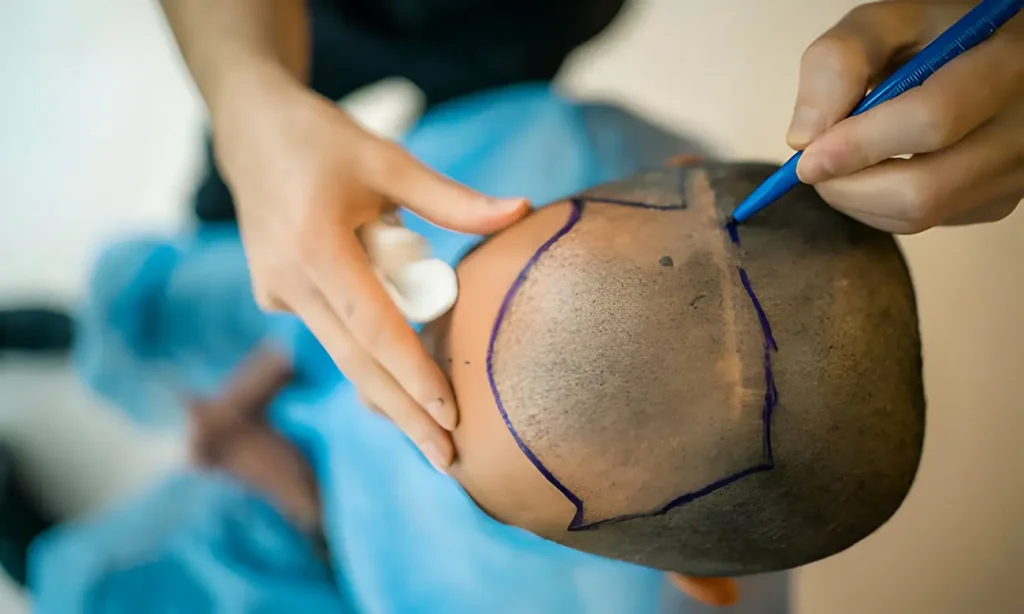Type and hit Enter to search
Experts in aesthetic surgery, dermatology, and beauty bring you the latest trends, research, and advice to help you make informed decisions about your appearance and health.
A web platform dedicated to aesthetic surgery, dermatology, and beauty, where expertise meets innovation, and your desires and needs become our mission. In a world where appearance and health go hand in hand, our platform leads the revolution, delivering the latest trends, research, and expert advice directly to you.
Our team consists of highly skilled professionals in the fields of aesthetic surgery and dermatology, committed to providing reliable information and guidance that will help you make informed choices about your appearance and well-being. We understand that every individual has unique needs and desires, which is why we approach each person with the utmost care and professionalism.
Powered by Aestetica Web Design © 2024
What to Expect 1 Week After a Hair Transplant: A Guide to DHI and FUE Recovery
So, you've finally taken the plunge and undergone a hair transplant. Congratulations! Now comes the fun part: navigating the first week of recovery. Expect to look like you lost a fight with a stapler and feel like you've been head-butted by a particularly enthusiastic sheep. But hey, at least you're one step closer to having a mane that would make a lion jealous. In this guide, we'll break down what to expect 1 week after a hair transplant, so you can survive the awkward phase and emerge victorious with a full head of hair.
The first week after a hair transplant can be filled with anticipation and questions. Understanding the typical healing process and what to expect during this critical period is essential for a successful outcome, regardless of whether you’ve undergone Direct Hair Implantation (DHI) or Follicular Unit Extraction (FUE).
What to expect 1 week after a hair transplant
A hair transplant is a significant step toward restoring hair growth, and while the long-term results are promising, the immediate aftermath requires careful attention. The initial week post-surgery sets the stage for the transplanted follicles to establish themselves and begin their growth journey.
This comprehensive guide delves into the intricacies of what to expect 1 week after a hair transplant, offering detailed insights into the healing phases, potential side effects, and aftercare instructions specific to both DHI and FUE procedures. By gaining a clear understanding of the recovery process, you’ll be better equipped to navigate this period confidently and contribute to a successful hair restoration journey.
The First 7 Days: Understanding the Healing Phases
- Day 1-3: The Initial Phase
Immediately after your hair transplant, both the donor and recipient areas will be sensitive and may exhibit redness and swelling. This is a normal part of the healing process as your body reacts to the surgical intervention. You may also experience some minor bleeding or oozing, which should subside within the first 24 hours.
During this phase, it’s crucial to adhere to your surgeon’s post-operative instructions meticulously. This typically includes keeping the areas clean and dry, avoiding strenuous activity, and taking prescribed medications as directed.
- Day 4-7: The Transitional Phase
As you enter the second half of the first week, you may notice the formation of tiny scabs around the transplanted grafts. These scabs play a vital role in protecting the newly implanted follicles and should not be disturbed or picked at.
Some individuals may also experience mild itching or tightness in the scalp, which is a sign of the healing process. Resist the urge to scratch, as this can dislodge the grafts and hinder their growth.
DHI vs. FUE: Key Differences in the First Week
While the overall healing process is similar for both DHI and FUE, there are subtle nuances that can influence your experience during the first week.
- DHI (Direct Hair Implantation)
DHI is known for its precision and minimal scarring. Due to the specialized implanter tool used in DHI, the recipient sites are created and the grafts are implanted simultaneously, minimizing trauma to the surrounding tissues. This can lead to faster healing and reduced discomfort in the first week compared to FUE.
- FUE (Follicular Unit Extraction)
FUE involves extracting individual follicular units from the donor area, leaving tiny puncture wounds that heal into nearly invisible scars. While FUE is generally well-tolerated, some individuals may experience slightly more swelling and discomfort in the donor area during the first week.
Potential Side Effects in the First Week
Shock Loss: This temporary shedding of existing hair around the transplanted area can occur in the first few weeks. It’s a normal part of the hair growth cycle and should not be a cause for concern. The transplanted hair will eventually grow back stronger and thicker.
Numbness or Tingling: You may experience some numbness or tingling in the scalp, which typically resolves within a few weeks or months.
Folliculitis: This inflammation of the hair follicles can cause small, pimple-like bumps. It’s usually mild and can be managed with topical or oral antibiotics.
Aftercare Tips for a Smooth Recovery
Follow Your Surgeon’s Instructions: This is the most critical aspect of ensuring a successful hair transplant.
Keep the Area Clean: Gently wash your hair with a mild shampoo as directed by your surgeon.
Avoid Strenuous Activity: Refrain from heavy lifting or exercise that can increase blood flow to the scalp and disrupt the grafts.
Sleep with Your Head Elevated: This helps reduce swelling.
Eat a Healthy Diet: A balanced diet rich in nutrients promotes healing.
Stay Hydrated: Drinking plenty of water helps keep your skin and scalp hydrated.
Be Patient: It takes time for the transplanted hair to grow. Don’t get discouraged if you don’t see immediate results.
Conclusion
The first week after a hair transplant, whether DHI or FUE, is a critical period that lays the foundation for successful hair growth. Understanding the healing process, potential side effects, and aftercare instructions empowers you to navigate this phase with confidence and contribute to a positive outcome.
By adhering to your surgeon’s guidance, maintaining a healthy lifestyle, and practicing patience, you can optimize your recovery and look forward to enjoying the benefits of a fuller, thicker head of hair in the months to come. Remember, the journey to hair restoration is a gradual one, but with proper care and attention, the results can be truly transformative.
Biography of Dr. Gorana Kuka Epstein
Dr. Gorana Kuka Epstein is a specialist in plastic and aesthetic surgery. She is a professor at the Miami University School of Medicine, a diplomate of the American Board of Hair Restoration Surgery, and a doctoral candidate at the Faculty of Medicine at the University of Novi Sad. Dr. Kuka Epstein is the founder and director of the FoundHair Training program, the founder of the Center for the Treatment of Female Hair Loss, the director of the research department at the Foundation for Hair Restoration in Miami, and the founder of the Dr. Gorana Kuka Foundation.
Reference





